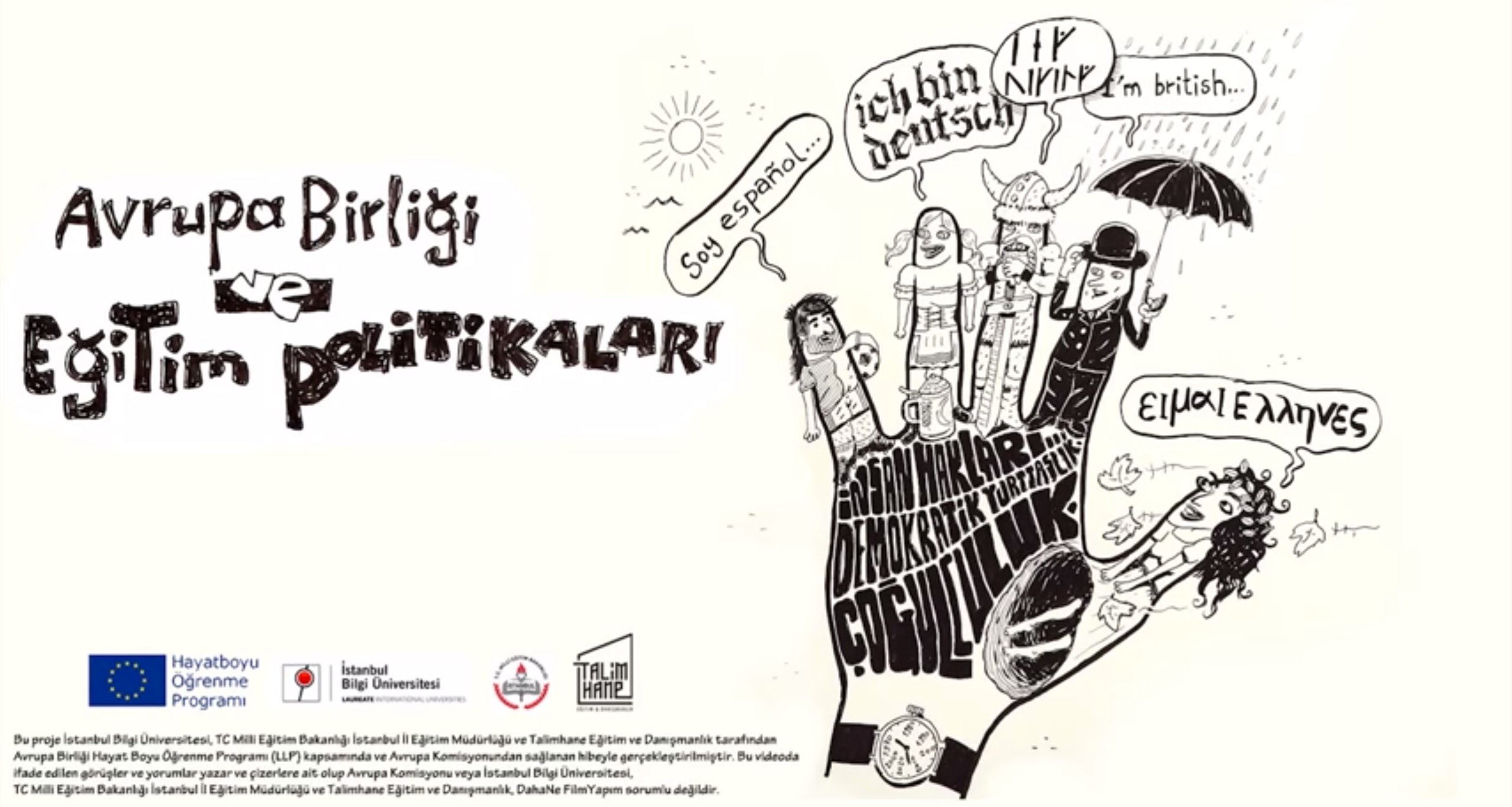WELCOME TO OUR BLOG...
As the European Institute team, we would like to welcome you to our blog in which we will share short updates on the EU, EU-Turkey relations, as well as our projects and activities.
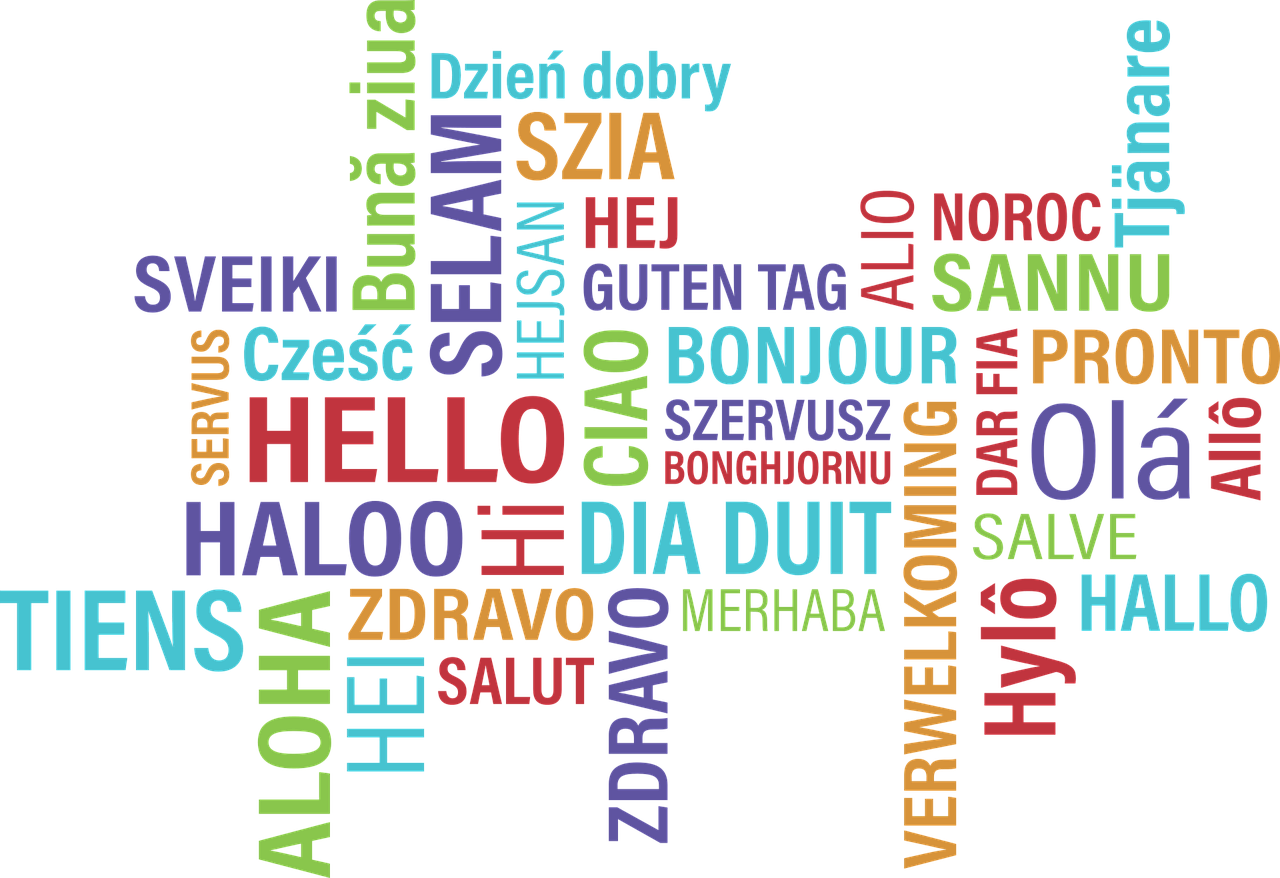
A VIEW OF THE EUROPEAN UNION ECONOMY IN THE WORLD WITH NUMERICAL DATA
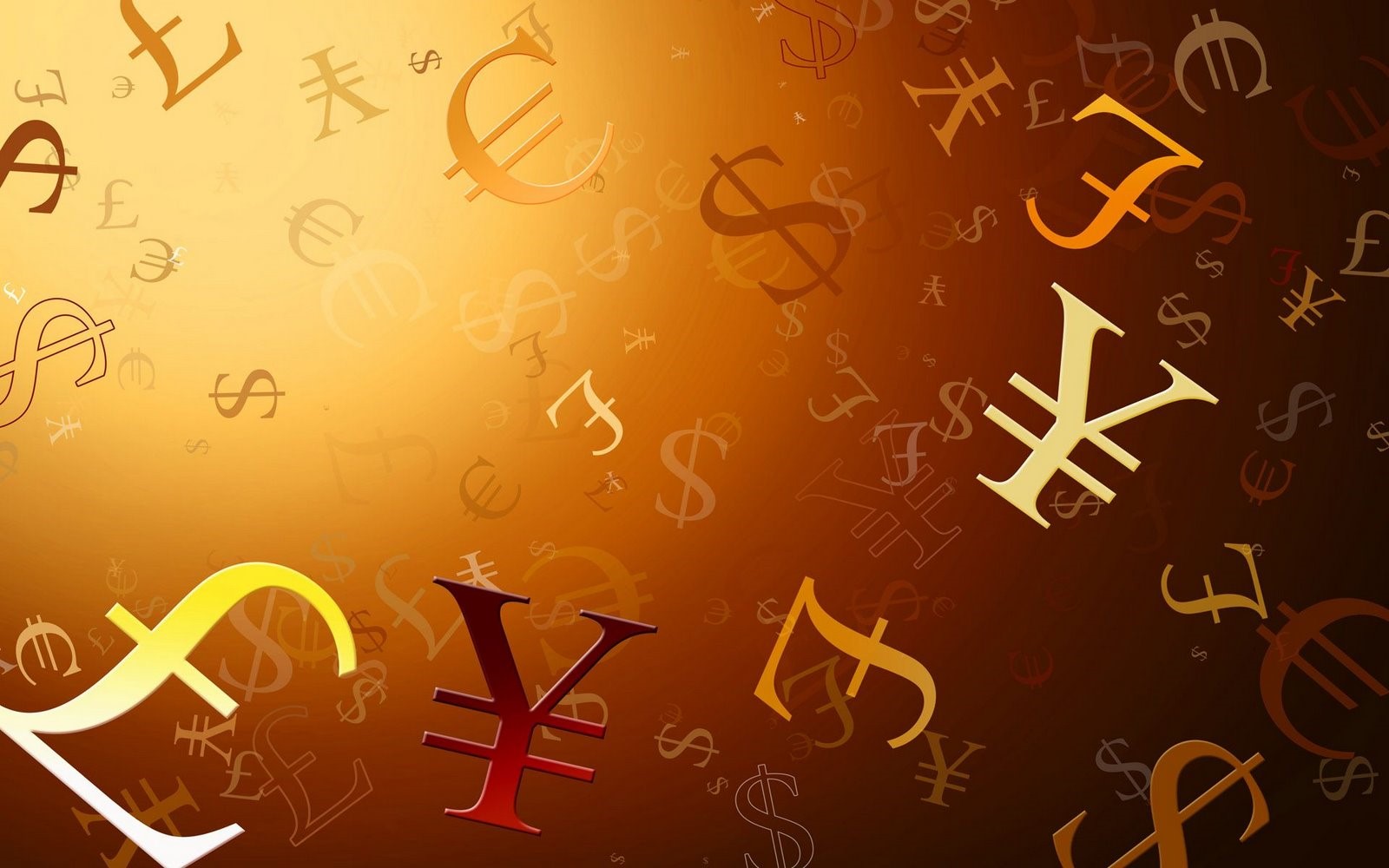
Photo: http://wallpapertor.blogspot.com/2016/06/wallpaper-economy.html
World's first 100 economies
|
Rank |
Country |
|
|
Million ($) |
|
|
1. |
US |
|
|
19.390.600 |
|
|
2. |
China |
|
|
12.014.610 |
|
|
3. |
Japan |
|
|
4.872.135 |
|
|
4. |
Germany |
|
|
|
|
|
5. |
United Kingdom |
|
|
|
|
|
6. |
India |
|
|
2.611.012 |
|
|
7. |
France |
|
|
2.583.560 |
|
|
8. |
Brazil |
|
|
2.054.969 |
|
|
9. |
Italy |
|
|
1.937.894 |
|
|
10. |
Canada |
|
|
1.652.412 |
|
|
11. |
South Korea |
|
|
|
|
|
12. |
Russia |
|
|
1.527.469 |
|
|
13. |
Australia |
|
|
|
|
|
14. |
Spain |
|
|
1.313.951 |
|
|
15. |
Mexico |
|
|
1.149.236 |
|
|
16. |
Indonesia |
|
|
|
|
|
17. |
Turkey |
|
|
849.480 |
|
|
18. |
The Netherlands |
|
|
825.745 |
|
|
19. |
Saudi Arabia |
|
|
|
|
|
20. |
Switzerland |
|
|
678.575 |
|
|
21. |
Argentina |
|
|
637.717 |
|
|
22. |
Taiwan |
|
|
579.302 |
|
|
23. |
Sweden |
|
|
538.575 |
|
|
24. |
Poland |
|
|
524.886 |
|
|
25. |
Belgium |
|
|
494.733 |
|
|
26. |
Thailand |
|
|
455.378 |
|
|
27. |
Iran |
|
|
431.920 |
|
|
28. |
Austria |
|
|
|
|
|
29. |
Norway |
|
|
396.457 |
|
|
30. |
United Arab Emirates |
|
|
|
|
|
31. |
Nigeria |
|
|
376.284 |
|
|
32. |
Israel |
|
|
350.609 |
|
|
33. |
South Africa |
|
|
349.299 |
|
|
34. |
Hong Kong |
|
|
341.659 |
|
|
35. |
Ireland |
|
|
333.994 |
|
|
36. |
Denmark |
|
|
|
|
|
37. |
Singapore |
|
|
|
|
|
38. |
Malaysia |
|
|
314.497 |
|
|
39. |
Philippines |
|
|
313.419 |
|
|
40. |
Colombia |
|
|
|
|
|
41. |
Pakistan |
|
|
303.993 |
|
|
42. |
Chile |
|
|
277.042 |
|
|
43. |
Bangladesh |
|
|
|
|
|
44. |
Finland |
|
|
|
|
|
45. |
Egypt |
|
|
237.073 |
|
|
46. |
Vietnam |
|
|
220.408 |
|
|
47. |
Portugal |
|
|
218.064 |
|
|
48. |
Peru |
|
|
215.224 |
|
|
49. |
Czech Republic |
|
|
|
|
|
50. |
Romania |
|
|
|
|
|
51. |
Venezuela |
|
|
|
|
|
52. |
New Zealand |
|
|
|
|
|
53. |
Greece |
|
|
|
|
|
54. |
Iraq |
|
|
197.699 |
|
|
55. |
Algeria |
|
|
178.287 |
|
|
56. |
Qatar |
|
|
166.326 |
|
|
57. |
Kazakhstan |
|
|
|
|
|
58. |
Hungary |
|
|
|
|
|
59. |
Angola |
|
|
124.209 |
|
|
60. |
Kuwait |
|
|
120.351 |
|
|
61. |
Morocco |
|
|
109.824 |
|
|
62. |
Ukraine |
|
|
109.321 |
|
|
63. |
Ecuadorian |
|
|
102.311 |
|
|
64. |
Puerto Rico |
|
|
98.805 |
|
|
65. |
Slovakia |
|
|
|
|
|
66. |
Sri Lanka |
|
|
87.591 |
|
|
67. |
Ethiopia |
|
|
|
|
|
68. |
Kenya |
|
|
79.511 |
|
|
69. |
Guatemala |
|
|
|
|
|
70. |
Dominican Republic |
|
|
|
|
|
71. |
Oman |
|
|
74.274 |
|
|
72. |
Myanmar |
|
|
|
|
|
73. |
Luxembourg |
|
|
|
|
|
74. |
Uruguay |
|
|
58.415 |
|
|
75. |
Panama |
|
|
61.838 |
|
|
76. |
Costa Rica |
|
|
|
|
|
77. |
Sudan |
|
|
58.239 |
|
|
78. |
Bulgaria |
|
|
|
|
|
79. |
Croatia |
|
|
|
|
|
80. |
Belarus |
|
|
54.436 |
|
|
81. |
Tanzania |
|
|
|
|
|
82. |
Lebanon |
|
|
51.457 |
|
|
83. |
Macau |
|
|
49.802 |
|
|
84. |
Slovenia |
|
|
|
|
|
85. |
Uzbekistan |
|
|
|
|
|
86. |
Lithuania |
|
|
|
|
|
87. |
Ghana |
|
|
47.032 |
|
|
88. |
Serbia |
|
|
|
|
|
89. |
Congo |
|
|
41.441 |
|
|
90. |
Azerbaijan |
|
|
|
|
|
91. |
Jordan |
|
|
40.487 |
|
|
92. |
Ivory Coast |
|
|
|
|
|
93. |
Tunisia |
|
|
40.275 |
|
|
94. |
Turkmenistan |
|
|
|
|
|
95. |
Bolivia |
|
|
37.122 |
|
|
96. |
Bahrain |
|
|
34.895 |
|
|
97. |
Cameroon |
|
|
34.006 |
|
|
98. |
Libya |
|
|
31.330 |
|
|
99. |
Latvia |
|
|
30.319 |
|
|
100. |
Paraguay |
|
|
|
|
|
|
|
|
|
Let's detail the list for the EU member states.
|
Rank |
Country |
Million ($) |
Population (million) |
GDPPC ($) |
|
1. |
Germany |
3.684.816 |
82.293 |
50842 |
|
2. |
United Kingdom |
2.624.529* |
66.573* |
44177 |
|
3. |
France |
2.583.560 |
65.233 |
44934 |
|
4. |
Italy |
1.937.894 |
59.291 |
35914 |
|
5. |
Spain |
1.313.951 |
43.397 |
32559 |
|
6. |
The Netherlands |
825.745 |
17.084 |
55185 |
|
7. |
Sweden |
538.575 |
9.983 |
58345 |
|
8. |
Poland |
524.886 |
38.105 |
13811 |
|
9. |
Belgium |
494.733 |
11.499 |
49272 |
|
10. |
Austria |
416.845 |
8.752 |
53764 |
|
11. |
Ireland |
333.994* |
4.784 |
80641 |
|
12. |
Denmark |
324.484 |
5.754 |
56307 |
|
13. |
Finland |
253.244 |
5.543 |
52422 |
|
14. |
Portugal |
218.064 |
10.310 |
24327 |
|
15. |
Czech Republic |
213.189 |
10.625 |
23750 |
|
16. |
Romania |
211.315 |
19.581 |
10813 |
|
17. |
Greece |
200.690 |
11.142 |
21144 |
|
18. |
Hungary |
152.284 |
9.689 |
14225 |
|
19. |
Slovakia |
95.938 |
5.450 |
17605 |
|
20. |
Luxembourg |
62.393 |
0.590 |
120061 |
|
21. |
Bulgaria |
56.943 |
7.037 |
8031 |
|
22. |
Croatia |
54.516 |
4.165 |
13924 |
|
23. |
Slovenia |
48.868 |
2.066 |
23597 |
|
24. |
Lithuania |
47.263 |
1.960 |
16680 |
|
25. |
Latvia |
30.319 |
1.950 |
15594 |
|
26. |
Estonia |
25.920 |
1.316 |
19704 |
|
27. |
Malta |
14.000 |
0.400 |
43160 |
|
28. |
Cyprus |
23.352 |
0.803 |
23352 |
|
|
------------ |
-------- |
|
-------- |
|
|
Total |
17.312.310 |
505.375 |
36576 (average) |
|
|
|
|
|
|
|
|
Turkey |
849.480 |
79.810 |
11760 |
Current Surplus Economies
|
Rank |
Country |
Current Surplus(Billion $) |
|
1. |
Germany |
296 |
|
2. |
Japan |
175 |
|
3. |
China |
162 |
|
4. |
South Korea |
85 |
|
5. |
Netherlands |
82 |
|
6. |
Taiwan |
79 |
|
7. |
Switzerland |
67 |
|
8. |
Singapore |
60 |
|
9. |
Italy |
53 |
|
10. |
Russia |
41 |
|
11. |
Spain |
24 |
|
12. |
Denmark |
24 |
|
13. |
Norway |
22 |
|
14. |
Iran |
21 |
|
15. |
Sweden |
21 |
|
16. |
Macau |
17 |
|
17. |
Israel |
14 |
|
18. |
Ireland |
10 |
|
19. |
Hong Kong |
10 |
|
20. |
Thailand |
44 |
Current account deficit economies
|
Rank |
Country |
Current Deficit(Billion $) |
|
1. |
US |
462 |
|
2. |
England |
91 |
|
3. |
Canada |
55 |
|
4. |
Turkey |
38 |
|
5. |
India |
33 |
|
6. |
Brazil |
28 |
|
7. |
France |
28 |
|
8. |
Algeria |
22 |
|
9. |
Argentina |
22 |
|
10. |
Australia |
21 |
|
11. |
Egypt |
19 |
|
12. |
Mexico |
19 |
|
13. |
Indonesia |
17 |
|
14. |
Iraq |
12 |
|
15. |
Colombia |
11 |
|
16. |
Pakistan |
11 |
|
17. |
Oman |
10 |
|
18. |
G. Africa |
9 |
|
19. |
Lebanon |
9 |
|
20. |
Kazakhstan |
8 |
When we take a look at the tables briefly, the brief summaries can be read as follows;
1. The EU region is 6.7% of the world population.
2. In the context of GDP, the world's second-largest economy.
3. In the context of GDP, the member countries are almost in the top 100 rankings.
4. Germany is the world leader in the current surplus countries category.
5. 7 of the member states are current countries with the current surplus.
6. The UK and France are the only countries that give a current account deficit.
7. The GDP per capita of EU countries can be calculated as $ 36,576. This is a fairly high figure.
8. The highest per capita GDP among the EU member states is Luxembourg with $ 120,061.
9. The lowest per capita GDP among EU member states is in Bulgaria with $ 8,831.
10. The total current surplus of countries in the EU economy is approximately $ 462 billion.
11. Total current account deficit is $ 119 billion.
According to the figures, the manufacturing process of the EU member states works efficiently. The EU is an important actor in the general world trade. The Union deals with 25.8% of the world GDP which makes it the biggest actor of World Trade.
Trade between the EU and the United States is also in a very high percentage (47%). This shows that the most trade is between the EU and the US. The EU is not only a trade union, but it is a structure that creates and implements a series of policies from the social life of the member states to the environmental problems and tries to realize them from the common budget. In this context, it can be said that the EU is even a larger economic community due to investing in quite different areas apart from trade which makes it different from other commercial competitors.
In order to discuss the future of the EU, these figures will probably play an important role in making a better analysis.
The tables reveal also another important issue. Turkey is an important actor as it is the 17th in the world economy. Considering Turkey's young population this is an important point for the EU and cannot be ignored.
Source: https://egezegen.com/ekonomi/dunyanin-en-buyuk-ekonomileri-siralamasi/
PEOPLE'S VOTE MARCH




THE EU AFTER BREXIT

Kaynak: https://ec.europa.eu/commission/news/commission-presents-white-paper-future-europe-2017-mar-01_en

Kaynak: https://www.ecfr.eu/article/commentary_scenarios_for_europe_deciphering_junckers_white_paper
There are many “Unions” in the world. Mainly they are concentrating on subjects like commercial, security, humanitarian and so on. These Unions are the only themed unions that concentrate only on one topic. In addition, the majority of these unions include the capital groups and the capital movements.
Before, the EU was only established as a Coal and Steel Union, today it has been transformed into a complicated partnership, for the future generations to live in better conditions in the context of economic and human norms.While other unions concentrate on one issue in general, the EU functions in a wide range, focusing on a better future for people in and around the world. Naturally, such a wide range of unity, brings also many problems.
After BREXIT, this issue became a key starting point for the EU, leading the union to new searches and future scenarios. After this point, the studies have revealed five scenarios. This scenario was presented to the public by the European Commission President Jean-Claude Juncker on March 1, 2017 as “White Paper”.
1. Carrying on
2. Nothing but the Single Market
3. Those who want more, do more
4. Doing less more efficiently
5. Doing much more together
For more information about scenarios;
The main issue here is the fact that the EU, which is in stark contrast to the concentration of other unions in a single area, is touching the whole life of a population of approximately 500 million people, currently covering 28 countries.
Below is a summary of the interest rates for the European Union;
25% of the world population in the 1900s
11% of the world population in the 1960s
6% of the world's population in 2015
and will be approximately 4% in 2060
The Union has complex problems because it contains 28 states. While some of them have very strong economic instruments, some of them are not so strong. Unfortunately, this situation creates different perceptions among people. Different countries are affected at different rates during periods of crisis and during rise periods. For example, in countries with strong economies, there are no major changes in the crisis and after, while in the weaker economies exit from the crisis creates more distinct differences. This creates rather discontent among the citizens of the powerful economy.
A remarkable case is that when looking at the White Paper scenarios: While BREXIT has begun to question the future of the EU, the fact that the parties, which predominate nationalist elements, are promising to leave the EU in the future makes the issue even more important.
Another point is the people, in the context of BREXIT, whose saying “no to the EU” is a matter that should be discussed. In the UK, the issue becomes even more important given the demonstrations of the supporters of the EU. It is obvious that the discussions about the future of the EU will be the subject of the agenda. But if there is a reality, then this is: the life of the EU will somehow evolve and continue. Europe has some necessities in this regard.
These are as follows;
Economy,
Population of young manpower
Security,
Power in world politics.
For additional information;
In the economic sense, the EU's ability to keep its present level depends on the common scientific and technological production. If the production of common-budget science is disrupted, it can cause major wounds in the European economy. Statistical information shows that in 2030 the world's oldest population would be Europeans. Naturally, after the discontinuation of scientific production, the active manpower will be inadequate and Europe will go out of position to compete with the Far East.
Although the security issue is a problem today, it will not be more efficient to provide one by one. Today, the EU has created an unprecedented peace environment in European history. As the deterioration of the peace environment threatens everything, it is unlikely that members of the union will be at such a risk. The protests that started in the UK after the BREXIT sound like the voice of those who do not want to risk.
BREXIT
What is Brexit mean?
It is a word that is used as a shorthand way of saying the UK leaving the EU - merging the words “Britain” and “exit” to get “Brexit”.
A referendum, in which everyone (or nearly everyone) of voting age could take part - was held on Thursday 23 June, 2016, to decide whether the UK should leave or remain in the European Union. Leave won by 51.9% to 48.1%. The referendum turnout was 71.8%, with more than 30 million people voting.
A short chronology of EU-UK Relations
The application for membership in 1961 was rejected by French President Charles De Gaulle. De Gaulle's motive was the UK's hardship and his dependence on the United States. UK tried again in 1967 but the situation remained unchanged until De Gaulle's departure from the French Presidency (1969).
The third initiative ended on January 1, 1973 with the adoption of the Union.
The privileged membership of the UK in the 43-year history of the EU has always been the subject of debate. In addition, the UK did not enter into EU monetary system, nor was it part of the Schengen Visa.
Why does the UK want to leave?
Sovereignty: Britain has more control over its laws and regulations;
Immigration: Britain's ability to control its borders more;
Budget: Britain stops paying 19 billion pounds per year to the EU.
Who support to leave:
UKIP (UK Independence Party) is running a campaign to exit the EU.
The conservative party deputies, including the five cabinet members, are almost half off.
Former London Mayor Boris Johnson is one of the most important figures in the campaign.
Some Labor Party’s deputies and the Northern Irish DUP (Democratic Union Party)
What is the exit procedure?
For the UK to leave the EU it had to invoke Article 50 of the Lisbon Treaty which gives the two sides two years to agree the terms of the split. Theresa May triggered this process on 29 March, 2017. The UK is scheduled to leave at 11:00 pm UK time on Friday, 29 March 2019. It can be extended if all 28 EU members agree, but at the moment all sides are focusing on that date as being the key one.
Possible results and dissident ideas:
Scotland backed Remain by 62% to 38%, while 55.8% in Northern Ireland voted Remain and 44.2% Leave.
These numbers are saying that; Scotland and Northern Ireland do not agree with England.
Possible political problem:
Scotland:
Scottish prime minister Nicola Sturgeon said his country "views its future as part of the EU". So much so that in the last referendum, in spite of with 55 percent of the vote to stay in the United Kingdom, Scotland may want to declare its independence and join the EU.
According to Sturgeon, the fact that Scotland voted to stay in the EU with 72percent, the country can declare its independence with a new referendum. At present, Scotland has to leave the European Union without ever wanting to leave.
Northern Ireland:
Northern Ireland has been struggling to leave England for a hundred years. For the time being, the IRA, which was largely disbanded and ended its armed activities, and the Sinn Féin party, which are considered as the political wing of the IRA, have accelerated the work of Northern Ireland to leave the UK.
The national chairman of the Sinn Féin party, spoke harshly about this, saying that the British electorate forcibly took Northern Ireland out of the EU. ” British votes put a stone on the will of Northern Ireland".
Scientific Research and budget:
British scientists have been saying that the decision to leave the EU for months (Brexit) is wrong; they can damage both inter-university cooperation and common scientific research budgets.
Education:
As a result of the separation from the EU, it is worried that British students will find it difficult to travel across Europe, which would harm the education system based on the free, and creative worldview.
Economic:
After the referendum, The British Pound began to loose value against the dollar.
Press conference by Michel Barnier, Chief Negotiator and Head of the Taskforce of the EC for the Preparation and Conduct of the Negotiations with the United Kingdom under Article 50 of the TEU on the Commission Recommendations for Article 50 Negotiations Directive.





CLIMATE CHANGE AND THE EU

Source: https://climate.nasa.gov/solutions/adaptation-mitigation/
It is not accidental that settlement areas, in general, have been on the edges of water resources throughout history. Water resources are an important phenomenon for the survival of human beings. Water resources have been important in terms of both consumption and transportation.
For this reason, the settlement and activity areas of mankind are concentrated in coastal cities. Water is vital.
The first thing that comes to mind when it comes to climate change is the melting of glaciers with the increase of potential heat energy of terrestrial and oceans. The melting of the glaciers has become the biggest problem threatening the existence of human beings in coastal cities.
Climate change scenarios are that the effects of an increase of 1.5 C and above for the world will be destructive.
Understanding climate change in terms of continuous warming will be a weakness in terms of subject matter. Along with climate change, the locations of cold and warm climate areas will change, which will lead to major changes in the settlement of people relative to existing climate zones.
In short, what is the cause of climate change that threatens the future of human beings? There is only one answer. The consumption of human beings. As a result of the current consumption concept, the release of greenhouse gases is greater than the amount that nature can handle.
This issue has come before the world public opinion as a result of scientific scenarios This issue has come before the world public opinion as a result of scientific scenarios. With the increase in public awareness, studies on the measures that can be taken have started and the Kyoto Protocol first came into the agenda with the signature of 155 states.
Details for Kyoto Protocol: https://unfccc.int/process/the-kyoto-protocol
It has been seen that the greatest damage in the climate change scenarios will take place in Europe and then in Asia, which has increased the activies of the European Union on the issue. In the first step, the Paris Agreement was signed one step ahead of the Kyoto Protocol.
In the context of the European Union's sensitivity to the issue, the Paris Agreement can be examined as to how far it carries its own members, according to the Kyoto Protocol.
Details for Paris Agreement: https://unfccc.int/process-and-meetings/the-paris-agreement/the-paris-agreement
European Union long-term goals are ;
By 2050, the EU aims to cut its emissions substantially – by 80-95% compared to 1990 levels as part of the efforts required by developed countries as a group.
Turning Europe into a highly energy efficient and low-carbon economy will also boost the economy, create jobs and strengthen Europe's competitiveness.
with these regulations ;
The EU's emissions trading system is the key tool for reducing greenhouse gas emissions from the industry at the lowest cost.
EU countries are required to support renewable energy sources such as wind, solar and biomass to reach green energy targets.
EU countries have to reduce the energy use of their buildings and industries are required to improve the energy efficiency of a wide array of equipment and household appliances.
Car manufacturers have to reduce CO2 emissions from new cars and vans.
Source: https://ec.europa.eu/clima/citizens/eu_en#tab-0-0
EU continues to fight climate change with climate action plans at the local level.
Turkey is also the partnership of this plans.. See also: https://www.avrupa.info.tr/tr/iklim-eylem-haftasi-2018
In the last part of our article, we want to draw attention to our individual measures. You can take individual measures to prevent climate change by taking these measures.
• Get a long-term shopping bag. Turn down the plastic bags given on each purchase and carry them in your own shopping bag.
• For products that require small packaging (liquid soap, cologne, etc.), choose the ones that can be filled. In this way, you contribute to both your home economy and reduce the amount of waste.
• Replace bulbs with energy-efficient light bulbs. This will prevent the release of 20 kg of carbon dioxide gas into the atmosphere per year.
• Relocate your refrigerator and freezer.
• Use less hot water. Keep in mind that warm water heating above 45-50 degrees will result in unnecessary energy consumption.
• When cooking, keep the lid of your pan closed while boiling water. This way you can save a significant amount of gas. When you use a pressure cooker, you can save up to 70%!
• Heat only as much water as you need when heating water with a kettle or kettle.
• Use a shower instead of bathing. So you spend only 70 litres of water instead of 200 litres.
• Close your door and window spacing with suitable materials. You can reduce your fuel costs by 30% by preventing air leaks in your building.
• Keep your air conditioner well and keep its filter clean. The clean air conditioner filter can prevent the production of up to 160 kg of carbon dioxide per year.
• Use solar energy. Solar energy can provide an important part of your hot water needs.
• Reduce the amount of time you are driving by choosing as far as possible walking, cycling or public transport.
• Have your vehicle serviced in a timely manner? If only 1% of the motor vehicle owners make regular vehicle maintenance, the production of more than 450 thousand tons of carbon dioxide per year can be prevented.
• Check the tires of your vehicles once a week and make sure they are properly blown. The proper tire pressure increases the distance you get from a tank with fuel up to 3%. Every 4 litres of petrol saved means 10 kg of carbon dioxide.
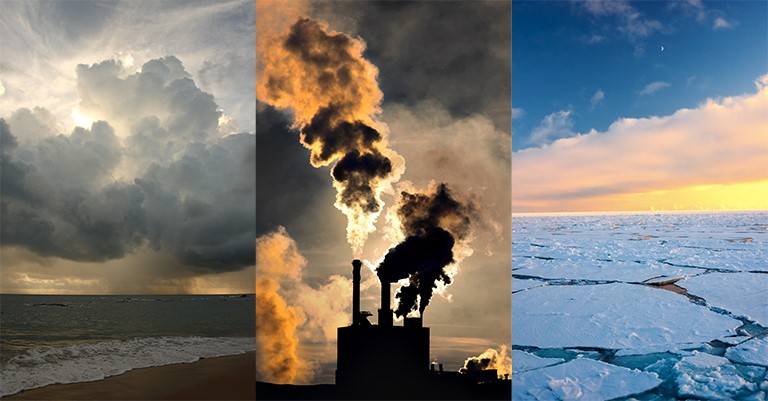
Source: https://climate.nasa.gov/resources/global-warming/
CLIMATE ACTION WEEK 2018
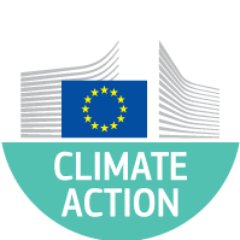
In the previous weeks, we wrote about the Environmental Policies of the EU. This week we will continue this topic with the Climate Action Week.
The Climate Action is one of the most important subjects for the European Union. As we know, the European Commission is paying attention to environmental and climatic issues. According to data (1) from the European Environment Agency (EEA); the greenhouse gas emissions were reduced 22.4 percent in the period from 1990 to 2016 in EU Member States. The aim of the Paris Treaty, keeping global warming below 2 ° C, is also still protected by the EU authorities. According to this, the EU set important targets to support the transition to a low carbon economy and to gradually reduce the greenhouse gas emissions by 2050. There is a need for strong cooperation at the local level in order to be successful in these measures. In this direction, the European Commission, through its Delegation, establishes relations with state actors like governments, business representatives and non-governmental organizations to develop cooperation and to work on climate action.
The European Union, together with the relevant institutions in Turkey, conducts various climate projects on transport, energy, climate and agriculture. In this context, the Climate Action Week is an important event about the visibility of climate projects. During the Climate Action Week, climate-themed panels, seminars, concerts and exhibitions will be held between 24-30 September 2018 for celebrating this week in Turkey
Sources:
(1) Climate Action Week - https://www.avrupa.info.tr/en/climate-action-week-2018
Reading Suggestions and websites:
E-Book Reading in Turkish: European Union and Environmental Policy (Avrupa Birliği ve Çevre Politikaları) http://dijitalavrupa.bilgi.edu.tr
For further information about the events of Climate Action Week in Turkey:
https://www.avrupa.info.tr/en/eu_calendar
Video Suggestion:
"What is 'Climate Diplomacy'?", https://youtu.be/LiWtM2fWjnE
And you can follow @ClimateDiplo account on Twitter!
Horizon 2020 Cultural Heritage Project (CoHERE)
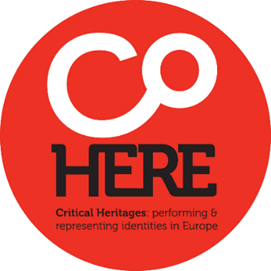

Today, we would like to inform you about our ongoing Horizon 2020 project called Critical Heritages: performing and representing identities in Europe (CoHERE).
In this project, which began in April 2016 researchers have been exploring what makes us feel ‘European’ Istanbul Bilgi University’s European Institute is a part of the consortium led by Newcastle University.
Investigators look at how heritage brings people from countries across the continent together as ‘European’ – and how it can drive them apart.
The €2.5 million Critical Heritages (CoHERE) project is the largest and most comprehensive study to date to explore the differences in how people, groups and institutions across Europe use the past to create a sense of belonging or non-belonging.
There are various research within the CoHERE project.
Museums: CoHERE covers a broad range of topics including how museums present the past and how ‘non-official’ portrayals of the past such as historical re-enactments contribute to our cultural identity.
Music, Dance, Languages and Tourism: It looks at music and dance, as well as language and tourism. Researchers also investigate how politicians and the media use the past, and how these influence attitudes towards Islam, and minority groups across Europe.
Food as Heritage: The project explores food as heritage. From traditional specialities that have protected designation of origin statuses such as Feta cheese or Melton Mowbray pork pies to differences in eating or cooking practices, the study investigates how different cuisines shape perceptions of the past and identity throughout Europe.
*This project has received funding from the European Union’s Horizon 2020 research and innovation programme under grant agreement No 693289.
For Project events and outputs please visit:
http://research.ncl.ac.uk/cohere
https://eu.bilgi.edu.tr/en/programs/ufuk-2020-kulturel-miras-projesi-cohere/
Follow CoHERE on social media:
Twitter: @cohere_eu
Facebook: @cohere.eu
CITIZENSHIP OF THE EUROPEAN UNION
The Union citizenship was introduced in the Treaty on European Union, signed in Maastricht in 1992, which endowed Union citizens with a number of novel rights, including political rights.
According to Article 20(1) of the Treaty on the Functioning of the European Union (TFEU), every person holding the nationality of a Member State is a Union citizen in addition to national citizenship.
Union citizens have to these rights:
*to move and reside freely in the other Member States,
*to vote, and to stand as candidates in municipal and European elections
*to petition the Parliament
*to apply to the European Ombudsman,
*and to enjoy in a third country the protection of the diplomatic and consular authorities of any other Member State.
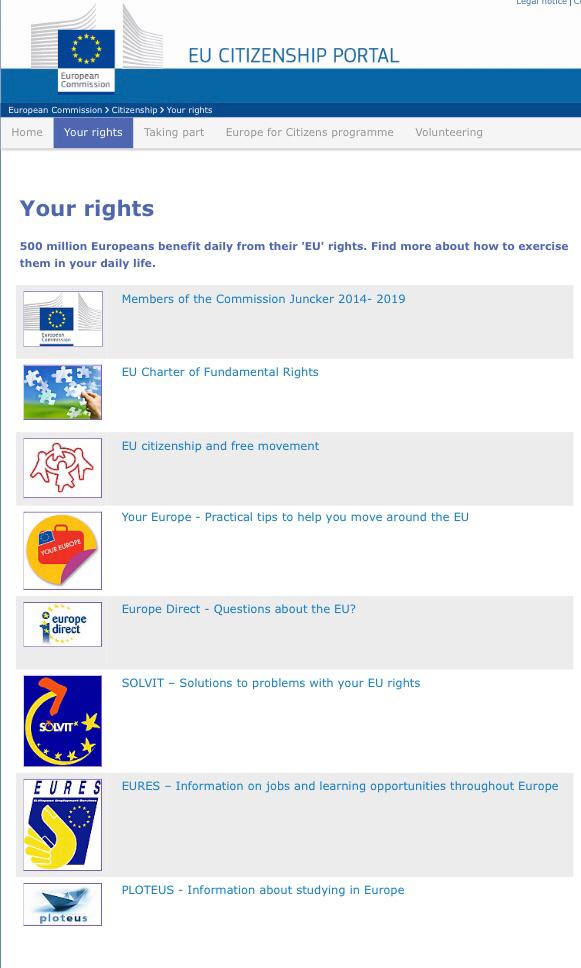
Sources and related websites:
http://ec.europa.eu/citizenship/index_en.htm
http://www.europarl.europa.eu/thinktank/en/document.html?reference=EPRS_BRI(2017)599361
https://eur-lex.europa.eu/legal-content/EN/TXT/PDF/?uri=CELEX:12012E/TXT
ENVIRONMENTAL POLICY OF THE EU
Environmental Policy has a high importance for protecting nature and increasing the quality of living and health in the European countries. At the same time, it is known that the environmental factors have a direct impact on the economy and policy of the EU Countries. The environmental issues in the EU are evaluated within the scope of the Environmental Action Programs that are prepared since 1973. The Environmental Action Programs are under the dual responsibilities of the EU institutions and national governments.
The implementation of these programs are the most necessary action for a sustainable environment. The current Environmental Policy of the EU is based on the 7th Action Program, which will be valid until 2020.
For watching the animation click on the image (in Turkish):
For further detail about the Environmental Policy of the EU:
Environmental Policy of the EU: https://www.ab.gov.tr/92_en.html
Environment: https://europa.eu/european-union/topics/environment_en
For further detail about the 7th Action Program of the EU:
Environment Action Programme to 2020: http://ec.europa.eu/environment/action-programme/
Decision No 1386/2013/EU of the European Parliament and of the Council of 20 November 2013 on a General Union Environment Action Programme to 2020 ‘Living well, within the limits of our planet’ Text: https://eur-lex.europa.eu/legal-content/EN/TXT/?uri=CELEX:32013D1386

WHAT IS HORIZON 2020?
“Horizon 2020 is the biggest EU Research and Innovation programme ever with nearly €80 billion of funding available over 7 years (2014 to 2020) – in addition to the private investment that this money will attract. It promises more breakthroughs, discoveries and world-firsts by taking great ideas from the lab to the market”.
More information available at: https://ec.europa.eu/programmes/horizon2020/en/what-horizon-2020
BILGI European Institute has three Horizon 2020 projects => CoHere, Feuture and RESPOND
Click the logos for more information!
WHAT IS THE BOLOGNA PROCESS?
The Bologna process is to create a common Higher Education Area in Europe. It is based on unity in diversity against monopoly in Higher Education.
In short, we can say that the Bologna Process is a whole set of reforms in the European Higher Education Area which aim to improve quality in education and training. After discussing by the Ministers of Education of France, Italy, Germany and the UK, the process was officially announced when the agreement was signed by 29 European countries' Ministers of Higher Education in Sorbonne in 1998.
For further information: What is the Bologna Process? - The Council of Higher Education (YÖK) Department of International Relations
Reading suggestion: Identity construction programmes of non-state, professional and collective actors: Case study phase II / Turkish Case
Ayhan Kaya and Ayşe Tecmen, Istanbul Bilgi University (2011 )
Animation: Jean Monnet Enhancing Learning EU at School: A follow up Project for Digital European Union: The Educational Policy of European Union
For watching the animation click on the image:
THE EUROPEAN NEIGHBOURHOOD POLICY (ENP)
The European Neighborhood Policy (ENP), based on the European Union's enlargement process in 2004, aims to deepen and strengthen the relations with its new neighbors which are outside the enlargement policy of the EU.
The ENP includes 16 countries which are the closest to Eastern and Southern neighbours. The South countries are Algeria, Egypt, Israel, Jordan, Lebanon, Libya, Morocco, Palestine, Syria and Tunisia. The East countries are Armenia, Azerbaijan, Belarus, Georgia, Moldova and Ukraine. Russia takes part in Cross-Border Cooperation activities under the ENP and is not a part of the ENP.
The main focuses of the ENP;
To promote political cooperation within the framework of common values and interests and spread freedom and democracy;
To support economic integration and economic reform processes, and to contribute to the level of welfare of neighboring countries;
To carry out joint projects in neighboring countries in the areas of development, environment, disarmament and terrorism, and to increase stability and security in parallel to the European Security Strategy.
For further information:
- Reading Suggestion: Avrupa Birliği'ne Giriş: Tarih, Kurumlar ve Politikalar
Authors: Ayhan Kaya, Senem Aydın-Düzgit, Yaprak Gürsoy, Özge Onursal Beşgül
- European Commission website: "European Neighbourhood Policy And Enlargement Negotiations"
SCHENGEN
What is the Benelux?
Benelux is a geographical region formed by three bordering nations joining together for political and geographical cooperation and creating a common space. The name Benelux is formed by the assembly of the initials of the three countries in their own language. (Belgium, Netherlands, and Luxembourg)

Source: https://www.reddit.com/r/vexillology/comments/5lxkeg/austrohungarianized_benelux_flag
We can see that many countries in the world have cooperated with political, commercial, or social motivations, as in the Benelux case, and removed some boundaries between them. The Schengen Region, formed by the Schengen Agreement, which contributes to the positive development of the European Union and social integration today, is an example of this cooperation model.

However, the Schengen Region is not a right that is limited to the European Union and is not directly earned by membership of the European Union. The Schengen Region and the European Union should not be confused.
Any state that has earned membership status in the European Union today is not directly involved in the field of Schengen. Any state that meets the conditions for full membership status must also be adequately qualified to participate in the Schengen Region. Just as other countries that are not members of the European Union but have joined this free movement area also provide the conditions for acceptance. (Switzerland, Norway, Iceland, Liechtenstein)
The Schengen Treaty and the right of free circulation provided by this treaty date back to 1985. In 1985, five European Community member states (France, Germany, Belgium, the Netherlands, and Luxembourg) took the first step to remove the internal border controls regularly and safely and signed the Schengen Agreement. The area created by this first agreement was gradually enlarged with the participation of other countries and formed the present Schengen District. The Schengen Convention was included in the 1999 Amsterdam Treaty on the primary sources of European Union law.

Source: https://www.schengenvisainfo.com/schengen-agreement/
Today, there are 26 member countries of the Schengen Region, and only 4 of these countries are not members of the European Union. There are also two countries that are members of the European Union but are not members of the Schengen Region: the United Kingdom and Ireland.
Countries Included in Schengen Area:
• Belgium
• Austria
• Czech Republic
• Denmark
• Estonia
• Finland
• France
•Germany
• Greece
• Hungary
• Iceland
• Italy
• Latvia
• Lithuania
• Luxembourg
• Malta
• Netherlands
• Norway
•Poland
• Portugal
• Slovakia
• Slovenia
• Spain
• Sweden
• Swiss
• Liechtenstein
For more information, please see: https://www.schengenvisainfo.com/schengen-visa-countries-list/
For more information, see: https://www.avrupa.info.tr/en/schengen-area-602
* For more information about the European Union, you can watch the animation which was prepared within the framework of Jean Monnet Enhancing Learning EU at School: A follow up Project for Digital European Union.
Animation: What is the European Union?
MODEL EUROPEAN UNION
In contemporary democracies, parliament is almost the jugular vein of democracy. The definition of the concept of democracy becomes meaningful only when the parliament, which is the representative body of the people, has got to work efficiently. Parliament members are generally elected directly by the people in all the nation states governed by democracy to be their voice and seek rights in the direction of the people's demands. In today's world order, the key to the self-administration of the people is that they have a parliament. That is exactly what the European Union has in this direction, the European Parliament, like local parliaments, is actively working to be the voice of European citizens and to express their rights and aspirations. The European Union has demonstrated at every opportunity that it has adopted democratic and rule of law principles as its most fundamental values and has continually increased the duties and authorities of the European Parliament. Today, the European Parliament has the equal right to speak with the Council in the European Union decision-making process. In other words, the legal arrangements that will bind the member countries are possible with the approval of the European Parliament and Council. In addition, the European Parliament has the right to inspect the Commission to protect the interests and rights of its citizens. In this direction, we want to learn from the experience of a student who participated in the European Union's modeling program, the Model European Union, with a small interview and to convey these opinions to you.
Pleasant readings...
Could you please introduce yourself?
I am Hulya Ezgi Tolay. I recently graduated from İzmir University of Economics, Faculty of Business Administration, Department of Political Science and International Relations.
What is the Model European Union project and how are you involved in this project?
The MEU project is a program that offers us hands-on training (imitation) on how the European Union works for students, new graduates, and master-rated students under the simulation program. It is under the control of the European Union and an annual budget of 500,000 euros is allocated for these programs. The process of getting involved in this project is a bit difficult but funny. First, we fill out the application form (transcript, letter of intent, preliminary letter, etc.). Then, if appropriate, you are asked a few questions for writing articles. The part that forced me the most was the article writing section because the word limit was 500 and it was difficult for me to transfer all my knowledge to such a short article. If your article is found appropriate, you are entitled to participate in the training and processes begin. For MEU 2018, only 180 people from 500 applications won the right to participate in the training. The participation fee is also charged by you (150 Euro). This participation fee includes many services such as accommodation, city transportation, food, city sightseeing, etc.. There are also opportunities to receive scholarships. I joined a scholarship for instance. For the scholarship, there are conditions that they set. From the official website you can see what these conditions are.
What was your position in this simulation?
In this simulation, I was a member of the European Parliament who participated from Germany. I was a member of social democrats.
Progressive Alliance of Socialists and Democrats (S&D)
http://www.socialistsanddemocrats.eu/
How have you observed similarities and differences between the Turkish Parliament and the European Parliament?
According to my observations, there are very similarities between the differences. As a result, the parliamentary system of operation is very similar in all countries governed by democracy. First of all, I must say that there is a multi-party system in the EU. Just like in Turkey and fragmentation in both between parties rather than the political system. Rightist, leftist, extreme rightist, extreme leftist, conservative. For example, one of the strongest parties in the European Union is a right-wing party like EPP / Central Right, and Christian Democrats, AKP, and it provides the majority. As a difference, we can say; Party representatives within the European Union can seriously criticize each other. These critics have never exceeded the frame of respect in my MEU program. But unfortunately, our differences of opinion in Turkey Parliament deputies can result in fights or insults. In the EU, we can interpret the fact that this is not the issue, as demolitions of people, even as their own experiences.
Did you feel the reflections of democracy and the rule of law principles that your party has adopted?
I certainly felt it. As I mentioned before, I can easily say that; democratic soul even in their daily lives. The legislative, executive and judicial bodies are sharply separated. I felt this clearly in this program. Observing the real democracy was invaluable.
What are your observations about the approach of project staff (the host organization) to you?
First of all, I would like to mention that all of them are voluntary employees. It took a lot of time and effort. It was necessary to be blind to see that volunteer employees did their work with earnest, respect and love. Until the end of the program, everything that had not been systematic was completely disciplined and perfect.
What are the reasons for the European Parliamentarians to represent their political views rather than their national identity in parliament? How does this reflect on the decision-making mechanism?
Parliamentarians of the European Union; the parliament represents the citizens of the union of the member states from which they belong, and is therefore determined by the political views of the parliamentarians that they tend not to be party countries. To set up a group in Parliament, you need to reach 25 people in at least 7 different member countries. The Union is thus trying to develop the concept of European Union citizenship and to close the democratic openness. It was aimed at defending the political views and interests of all European citizens, not the individual country interests of Parliament members. But, of course, there are occasional disruptions in operation. I would like to mention if you have experienced an example of this in our participating simulation program.
A legislative amendment to the rights of LGBT was passed, but the left-wing Greens were already ideologically divergent. In the amendment of the law on this subject, some Greeners considered the interests of citizens of their own country, ignoring the concept of European Union Citizenship, and there was a serious division between them. As a result of this incident, a new pirate party was set up before the vote, and the Greens were divided. At this point, individualism was at the forefront when citizenship rights within the European Union need to be addressed according to EU principles. But I would like to underline that the basic concepts of democracy are not put at risk.
Is it what you earn by working on the same idea with people with different national identities in a parliament?
As I have mentioned several times above, it is not wrong to say that the EU is based on fundamental tolerance, respect, democracy. Sometimes I may say that the state which is the member of every European Union has succeeded in the unity of being united even if there are troubles. The EPP, which is rightly inclined to explain it by giving an example from the program I participated in, has fallen into disagreements in almost every amendment of the law. But with respect, mutual sacrifice, they managed to compromise without a problem. Despite the fact that they all represented different countries and had different views on the same law amendment, the common result was very comfortable, taking into account their interests.
Do you want to add anything?
MEU allows students of social sciences faculties like myself to practice and learns the shared knowledge in school. I recommend that everyone with this opportunity to participate. Besides this, the certificate is given at the end of the program. I do not think it is necessary to emphasize the importance of having such a certificate for the students of the Faculty of Social Sciences. Also; Since this experience has been gained by participating in this program, there is also the opportunity to volunteer as a member of the organization team in the following years. Besides being able to see the EU parliament as someone who has finished Political Science and International Relations as well as to speak his own words, being a part of that democracy spirit, being a witness to the practical concepts of the concepts taught to us for many years, made me very happy and at the same it was instructive.
Detailed information: http://www.meu-strasbourg.org/
Youtube page: https://www.youtube.com/user/MEUStrasbourg/featured
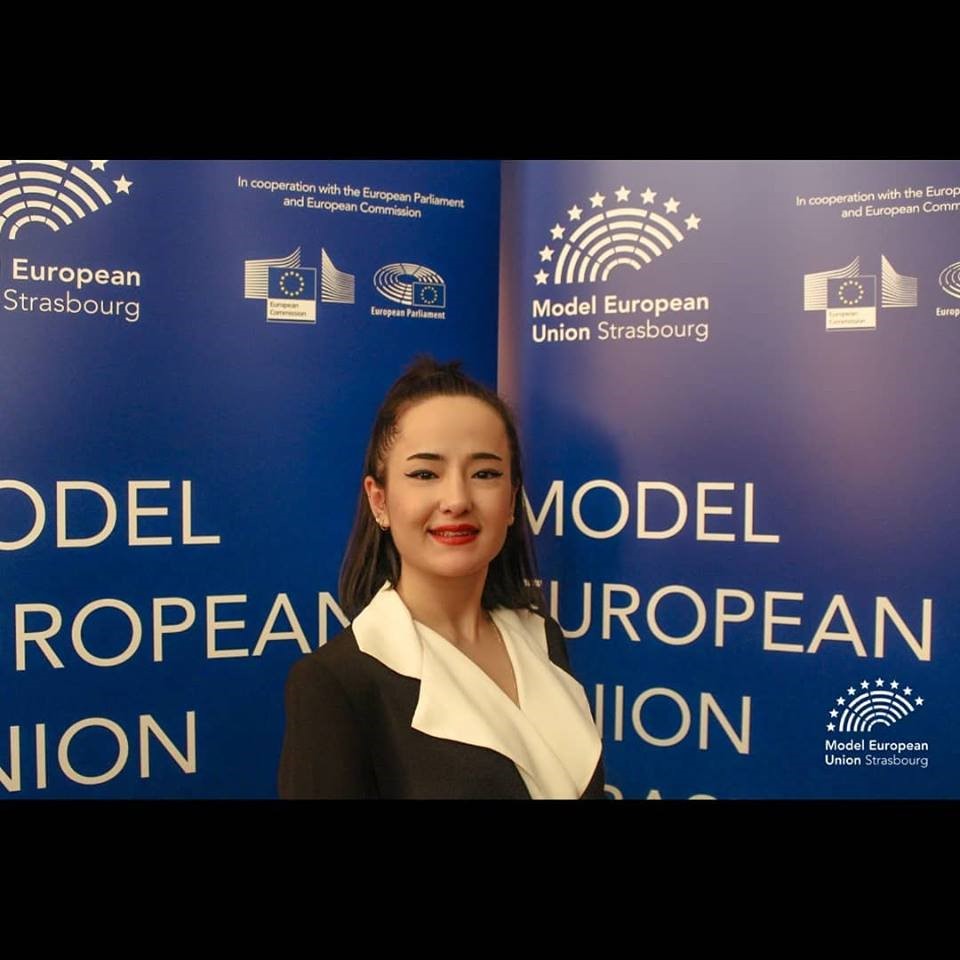
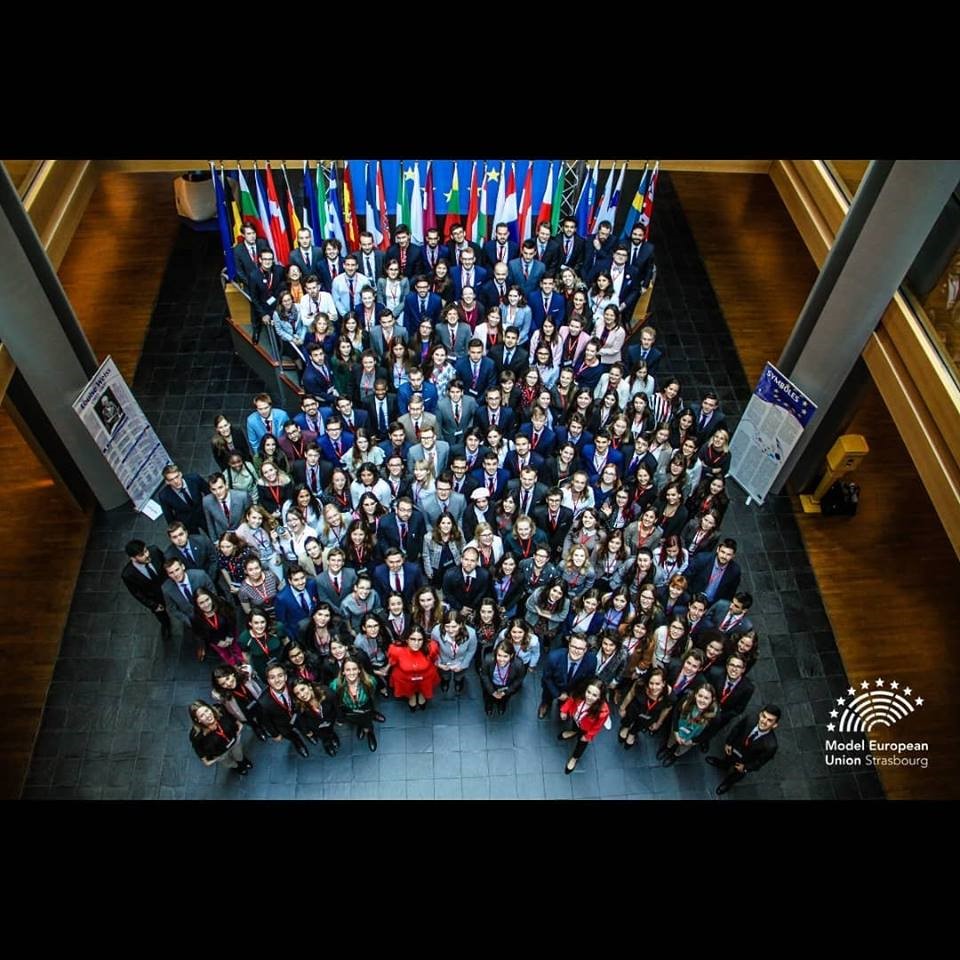

Source for images: https://www.facebook.com/meustrasbourg
Interviewer: Ekin Doruk, Trainee, European Union Relations Department student
2004 ENLARGEMENT OF THE EUROPEAN UNION

Source: https://epthinktank.eu/2016/01/16/enlargement-what-think-tanks-are-thinking/
In the bipolar new world regime formed after World War II, the European Union took the first steps by the six founding countries in 1951 with the European Coal and Steel Union Treaty, by the 1990s, the European Union reached 15 members with 3 enlargement movements. But the most effective and important step in the enlargement policy, which is complementary to the idea of European integration, was the participation of the Central and Eastern European countries, which increased the number of members to 25 in 2004. Moreover, this participation also provided institutionalization of the 'conditionality principle' within the union.
After the Cold War, the Central and Eastern European countries, which had been separated from the Soviet republics in the world order that was restructured by the collapse of the Berlin Wall, were determined to approach the line of European integration, adopting the democratic principle and free market economy after the planning economy and authoritarian regime. Independent of the European Union, the dream of 'United Europe', which lasted for centuries, finally came to light again after the Cold War. These countries believed that inclusion in the Western European Integration would be more beneficial and peaceful than other possible options. The European Union's point of view on this integration has been evidenced by the Copenhagen Summit held on 21-22 June 1993 and stated that the EU Central and Eastern European Countries could become members of the Union if they fulfill the necessary economic and political criteria and fulfill their responsibilities.
For the first time in the Copenhagen Summit, the conditions for European Union membership and acceptance have been compiled in writing under the three headings "Copenhagen Criteria".
-Political criteria: The candidate country must have attained a stable institutional structure secured by democracy, rule of law, human rights, protection and acceptance of minorities.
-Economic criteria: The candidate country must have a well-functioning market economy and the capacity to resist market forces and competitive pressures within the EU.
-Acceptance of the acquis communautaire: The candidate country should have the capacity to undertake and implement the legislation of the European Union, including compliance with the aims of political, economic and monetary unions. Among these are political criteria, namely democracy, rule of law, human rights and respect for minorities. This is the precondition for the start of EU accession talks. Negotiations with a country that does not meet these criteria are not started.
Source: https://oldweb.ikv.org.tr/icerik_en.asp?konu=eu_enlargement
In the process of accession to the EU, the Commission regularly monitors the progress made by the candidate countries towards meeting the Copenhagen Criteria and presents them in the Progress Report. The 'Accession Partnership Document' provides a timeline for the priorities of all the studies that the candidate countries need to undertake in the direction of membership. Each candidate country is preparing a detailed 'National Program' to meet the priorities set out in the Accession Partnership and to align with the EU acquis.

The 4th Enlargement of the European Union in the History of 2004 and the Countries Included in the Union:
Hungary
Poland
Czech Republic
Slovenia
Estonia
Greek Cypriot Administration
Latvia
Lithuanian
Malta
Slovakia
For further reading: http://ec.europa.eu/commfrontoffice/publicopinion/flash/fl_257_sum_en.pdf
KNOW YOUR BASIC RIGHTS...

The European Union, founded on democratic and rule of law principles, protects universal values such as human dignity, equality, justice, freedom and solidarity, has always made progress in developing the rights and freedoms that the individual has. While the Union contributes to the preservation and development of these values, it respects the different cultures and traditions of the European peoples and the national identities of the member states.
In the early years of the Union, even though there was no regulation on this issue in the primary sources, fundamental rights legislations emerged as a necessity within the union law which started to develop towards the end of the 60's. The Declaration of Conclusions of the Cologne Summit of 3-4 June 1999 concluded that these rights and freedoms should be clearly stated in the light of social and scientific progress in order to ensure the fundamental rights to be preserved and to protect the freedom of movement of goods, services and free movement of people in a regular and balanced manner. After signing the "European Union Charter of Fundamental Rights" in Nice in 2000, it was included in the primary legal sources through the Lisbon Treaty (2009).
With this Charter, the most basic rights were guaranteed including protection of human dignity, the right to life, the prohibition of torture and inhuman treatment, the right to physical-spiritual immunity of persons. As European law guaranteed individual rights of the people living in the member countries are regulated, the citizenship rights of the individuals are regulated in the Charter.

Source: https://twitter.com/eu_commission/status/733239474327572481
Every citizen in a member state within the Union (as in the local parliament) has the right to vote and run for the election of the European Parliament. Thus, the concept of "unity citizenship" has been developed with this condition. Having regard to the Charter of Fundamental Rights of the European Union, the duties and authorities of the Union and the principle of subsidiarity,
• from their common constitutional values and international obligations,
• From European Union and Community agreements,
• From the European Convention on Human Rights,
• From social conditions accepted by the Community and the European Union,
• includes the rights of the European Court of Justice and the European Court of Human Rights arising from case law.
Charter of Fundamental Right: https://www.avrupa.info.tr/en/charter-fundamental-rights-european-union-708

Image source: http://europa.eu/rapid/press-release_MEMO-14-284_en.htm
Video Suggestion:
SHARED DIFFERENCES
It is necessary to make art universal to separate from political or other things.
So the name of my art that I made on the wall of the French Cultural Center is 'Shared Differences'. Jef Aerosol
- Born in France in 1957, Jef Aerosol is a painter who has focused his attention on street art. -
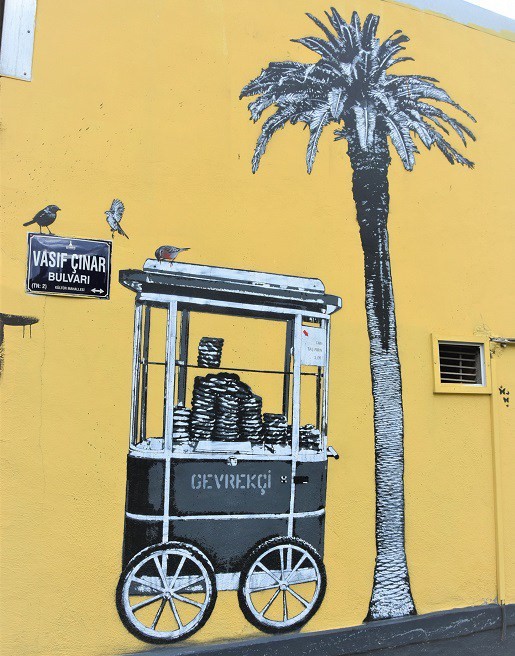

Source: https://gazetedokuzeylul.com/paylasilan-farkliliklar/
While acknowledging views with different historical, cultural, political and social outlooks occasionally lead to tensions, it is realistic to expect that this coming together will create an atmosphere of mutual trust and understanding.
It is a very peaceful way to discuss the differences between Turkey and the Union member societies, which have been officially a candidate for Union since the Helsinki summit in 1999, in a dialogue with the EU for more than 50 years, with this perspective.
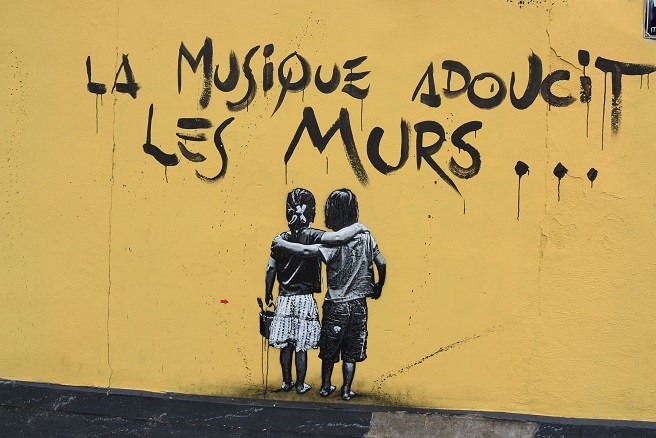
Source: https://gazetedokuzeylul.com/paylasilan-farkliliklar/
The French artist Jef Aerosol expresses this deep fact in similar terms. For his work on the wall of the French Cultural Center in İzmir, he says:
'People in wall paintings in Izmir, could witness Turkey with France's different encounters. Here we aimed to bring tolerance to the foreground. Turkey and France are two very nice places. '
When we look at the world that we have occupies for thousands of years, especially today's maps formed with borders drawn after 1945, people can share quite the same things in different places. Even on the other side of the world, it is quite easy to find something from yourself or your own space. Because one always looks for familiar things, and does so subconsciously. It is an existential issue; human beings seek familiarity and comfort as a survival instinct. Therefore, it's always easier to discover similar things.
But there is a situation that we are not aware of. In the same way, the unique differences of the different societies we see in different corners of the world are the same as the unique differences in our circle, the difference of being different from one another. Because the only thing that truly exists is the same thing that the others share.
It will be easier and more possible to create a trustful and peaceful environment by acting with the awareness that this shared status of difference is in fact the greatest resemblance of human beings, and by joining our life by taking the differences by value and nurturing.
Differences transforms our values, and our values are what makes us individuals
The world is beautiful with the unity of differences.
Reading Suggestion:
Farklılıkların Birlikteliği:Türkiye ve Avrupa'da Birarada Yaşama Tartışmaları

THE INSTITUTIONAL STRUCTURE OF THE EUROPEAN UNION (PART III)
European Committee of the Regions (CoR)
The Regional Committee (CoR) is a qualified committee composed of representatives of EU member states’ local and regional administrations. The CoR was established in 1994 and works with expertise groups. Also, various subcommittees can be established within the CoR. Draft opinions on specific decision proposals or issues are prepared by these subcommittees.
Financial Institutions: The European Central Bank
The European Central Bank is an independent institution which has an authority to carry out the monetary policies of the Eurozone. The most important tasks of the European Central Bank are to determine the monetary policies of the EU, to protect the purchasing power and to provide to price stability in the Eurozone.
Financial Institutions: European Investment Bank
The European Investment Bank is an institution that maintains its existence from the very beginning of the European integration. The main objective of the European Investment Bank is to support investments in accordance with the EU policies.
Reading Suggestion:
Avrupa Birliği’ne Giriş Tarih, Kurumlar ve Politikalar
THE INSTITUTIONAL STRUCTURE OF THE EUROPEAN UNION (PART II)
This week we continue to share the second part the institutional structures of the European Union.
European Court of Justice (ECJ)
European Court of Justice has the most fundamental role as a legal institution in European integration. Providing interpretation and implementation of EU founding treaties are the main tasks. European Court of Justice has played a crucial role in the EU integration since the establishment of the European Union.
European Court of Auditors (ECA)
The current structure of the European Court of Auditors was founded in Luxembourg, 1975. Basically, the main mission of the European Court of Auditors is monitoring the income and expenses of the EU in accordance with the European law.
European Economic and Social Committee (EESC)
The European Economic and Social Committee (EESC) is an advisory body composed of representatives of workers' and employers' groups. The EESC shares opinion on the EU-related issues to the European Commission, the Council of Europe and the European Parliament. In this way, the EESC serves as a bridge between EU decision-making bodies and EU citizens.
Reading Suggestion:
Avrupa Birliği’ne Giriş Tarih, Kurumlar ve Politikalar
THE INSTITUTIONAL STRUCTURE OF THE EUROPEAN UNION (PART I)
DECISION TRIANGLE OF THE EUROPEAN UNION
Today, we will look at the institutional structure of the European Union which is the decision triangle.
There are 3 institutions responsible for making policy and taking decisions:
- European Parliament:
- Council of the European Union
- European Commission.
European Parliament
The European Parliament has an authority on legislative, budgetary and political control. There are several commissions determined by the Parliament each period and organized on a sectoral basis to prepare the studies of General Assembly. The European Parliament elections are held every 5 years. The EU citizens have the right to vote and to become a candidate in the parliament. The European Parliament is the only international platform which comes to power by direct vote.
Council of the European Union
Council of Ministers is one of the most important institutions of the European Union. The EU Council of Ministers should not be confused with the Council of Europe.
Council of Ministers is the main decision-making body of the EU and plays a coordinating role in ensuring economic and political decisions between the member states.
European Commission
The European Commission has the most unique structure among the other EU institutions.
The European Commission works for the development of the European Union acquis and undertakes the task of the protector of Founding Treaties of the European Union.
It controls the implementation and the budget of the European Union common policies.
It represents the European Union at international levels and in the presence of the third countries. Besides, the commission is undertaking a mediator position for potential conflicts between the institutions of the EU.
Reading Suggestion:
Avrupa Birliği’ne Giriş Tarih, Kurumlar ve Politikalar
THE EU MEMBERSHIP PROCESS of TURKEY
In 1959, Turkey has been applied for the membership to European Economic Community (EEC), known as the biggest peace project in the history of humanity. Application to membership has been accepted by the EEC Council of Ministers by advising to sign a partnership agreement which will be valid until the fulfilment of the membership conditions of Turkey.
In 1963, a partnership agreement (The Ankara Agreement) was signed between EEC and Turkey and entered into force on 1 December 1964. The Ankara Agreement is a highly important treaty due to creating the legal basis of Turkey-European Union relations.
The Ankara Agreement has designated three phases for the membership to the European Economic Community. These periods are defined as the preparatory period which started in 1964, the transitional period and final period.
Full chronology can be found here.


TREATY of LISBON and ITS IMPORTANCE (2007)
The Lisbon Treaty, also known as the Reform Treaty, was a result of the Lisbon Summit held on 18-19 October 2007. EU member states had previously attempted to establish a constitution but this failed because the Dutch and French voters opposed it on national referendums. The Treaty of Lisbon entered into force in 2009 and it significantly changed the structure of the EU and the decision-making mechanism.
These changes include:
The establishment of a High Representative of the EU Foreign Affairs and Security Policy who chairs the meetings of the Foreign Relations Council, which brings the Foreign Ministers together.
The Agreement also brought about a new voting system. In order to be able to make a decision in the voting system where the qualified majority is required, 55% is required when considering the number of countries, and 65% when the country's population is considered.
At the same time, this agreement also increased the policy areas for which elected members of the European Parliament were obliged to implement EU legislation.
WHAT IS A JEAN MONNET CENTRE OF EXCELLENCE?
A Jean Monnet Centre of Excellence is a center point of competence and knowledge on subjects related to the European Union. It brings together high-level experts to give the opportunity to create links between the various disciplines and resources in European studies as well as to enhance the networks between academic institutions in various countries.
The Centres play a key role in reaching out to students from faculties that do not explicitly focus on European Union studies, as well as to policy makers, civil servants, civil society, and the general public at large. More information can be found on the European Commission website: https://eacea.ec.europa.eu
İstanbul Bilgi University’s European Institute was selected as a "Jean Monnet Centre of Excellence" with the "European Values at School - EUducate" project. Having received a very high score during the evaluation process, BİLGİ thus became the fourth university to be nominated as “Jean Monnet Centre of Excellence “ in Turkey as a result of intensive academic work on European Integration since 1996.
Here is the link to our EUducate project => https://eu.bilgi.edu.tr/en/programs/jean-monnet-okulda-avrupa-degerleri/
MAASTRICHT TREATY
The Treaty of Maastricht, signed on February 7, 1992, is known as the last step of the transformation of the European Economic Community (EEC) into the European Union. The Treaty entered into force in November 1993 and the European Union was officially established. Therefore, the other name of the treaty is the European Union Treaty.
The "3 Pillars of the European Union" were formed with this Treaty, which were later repealed with the 2007 Lisbon Treaty.
In these three columns contain 3 main subjects.
European Communities (EC); includes economic, social and environmental subjects.
Common Foreign and Security Policy (CFSP); contains foreign and military affairs.
Police and Judicial Co-operation in Criminal Matters (PJCCM); covers working in collaboration against crimes.
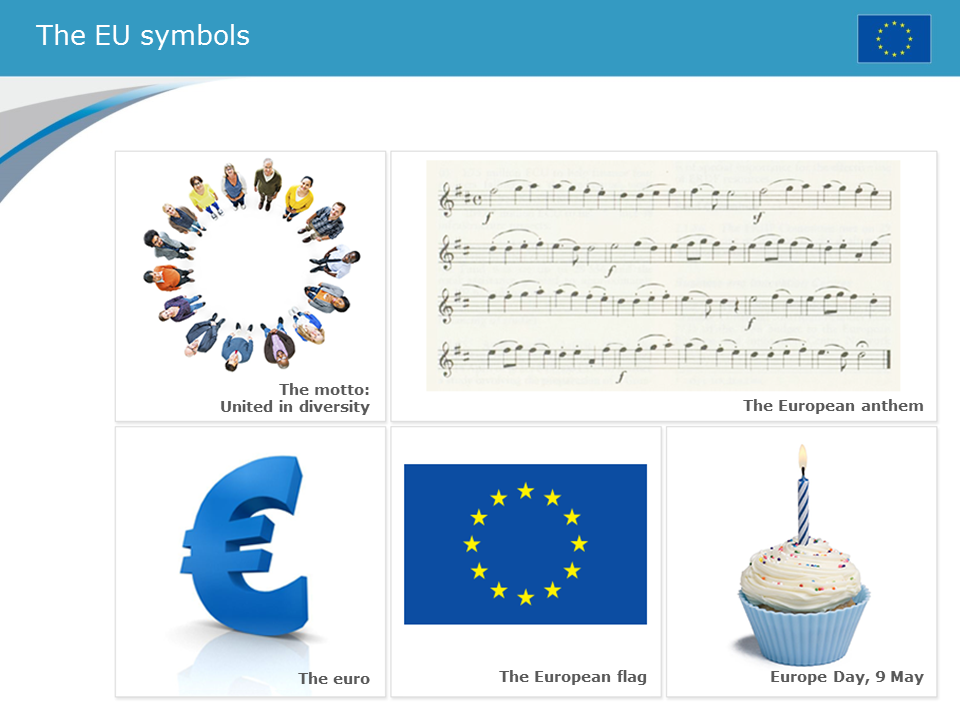
THE SLOGAN OF EUROPEAN UNION: “UNITY IN DIVERSITY”
The slogan “unity in diversity” has been used since 2000 by the European Union. Also, it is translated into other official languages of the European Union. It is one of the newest symbols along with the European flag and the European Anthem. This slogan indicates to importance of togetherness with different cultures, languages and traditions for the EU’s peace and wealth.
THE EUROPEAN FLAG
The history of the flag goes back to 1955. The Council of Europe - which defends human rights and promotes European culture – chose the present design for its own use. In the years that followed, it encouraged the emerging European institutions to adopt the same flag. Therewith, the European Union has been started to symbolizing with a flag which is blue colour and 12 yellow stars. The flag remarks to the identity and unity of Europe. Even though some people assume that the 12 stars represent the number of EU member states but actually it represents unity and harmony.
THE EUROPEAN ANTHEM
Council of Europe was accepted the Anthem of Europe in 1972. The Anthem of Europe adapted from the final movement of Beethoven's 9th Symphony and it has been started to use by the European Union since 1986.
For further information:
https://europa.eu/european-union/about-eu/symbols/motto_en
https://www.coe.int/en/web/about-us/the-european-flag
https://www.ab.gov.tr/262_en.html
9 MAY EUROPE DAY
On May 9, 1950, French Foreign Minister Robert Schuman made the initial appeal for the construction of Europe. His statement, also known as the "Schuman Declaration", is seen as the building stone of the institution we have today accepted as the European Union.
During the European Council in Milan in 1985, the heads of State and government decided to set 9th May as "Europe Day". Celebrated each year since 1986, Europe Day is the occasion for events and celebrations that draws Europe closer to its citizens.
WHAT IS THE EUROPEAN UNION (EU)?
The European Union (EU) is a political and economic union that are located primarily in Europe. The European Union was formally established when the Maastricht Treaty came into force on 1 November 1993. The treaty also gave the name European Community to the EEC, even if it was referred as such before the Treaty.
Below is a 6 minutes Turkish animation video explaining the objectives of the EU:
Have you seen our Digital EU Book? More information and more animation on: http://dijitalavrupa.bilgi.edu.tr/
Reading Suggestion:
Avrupa Birliği’ne Giriş Tarih, Kurumlar ve Politikalar






